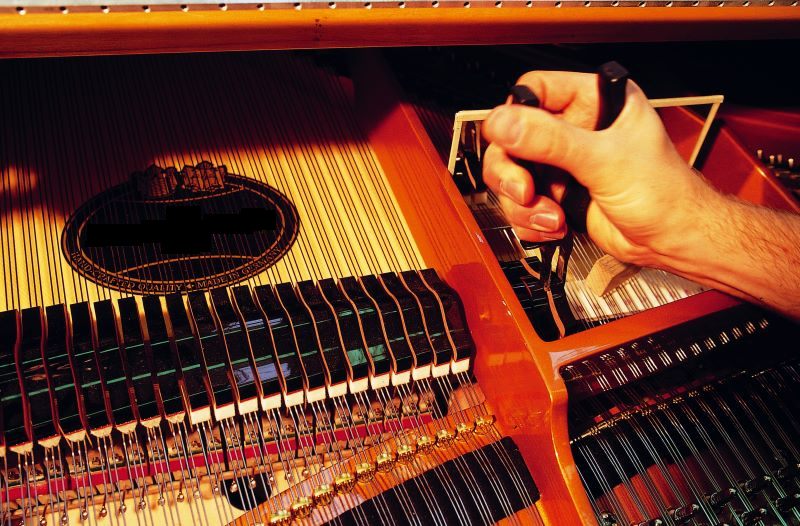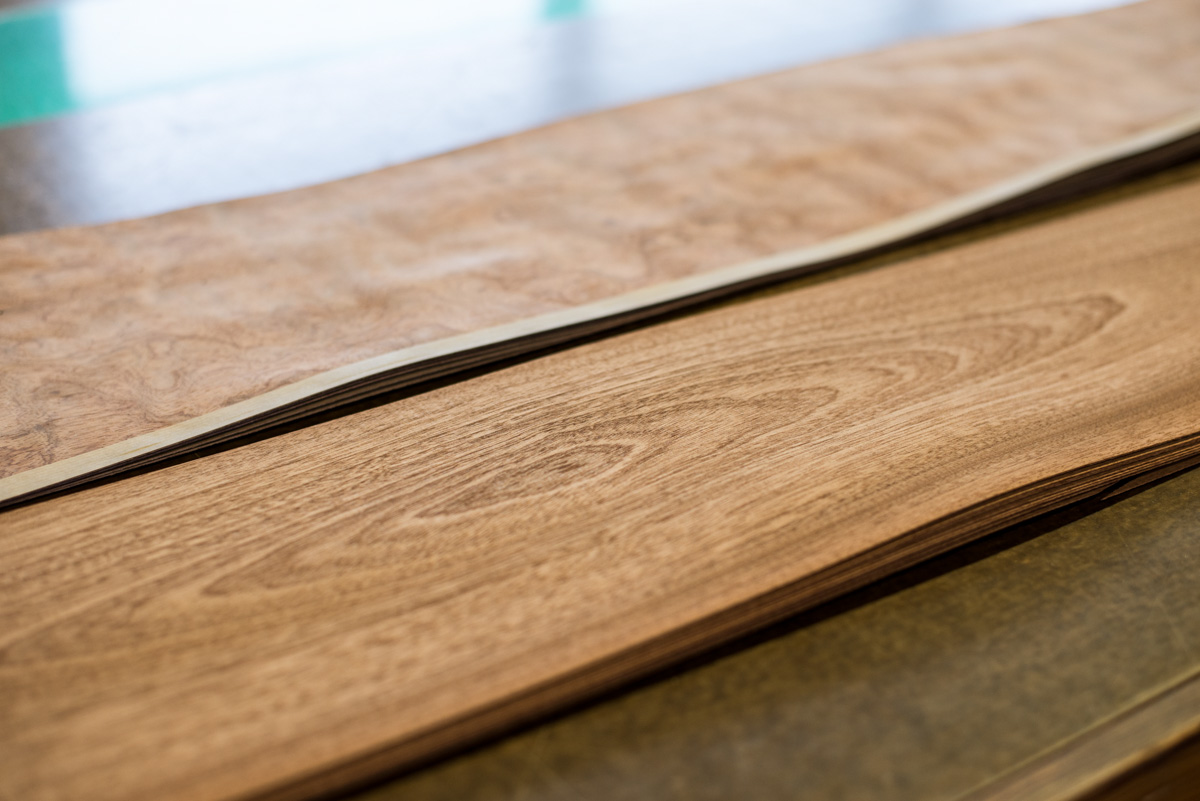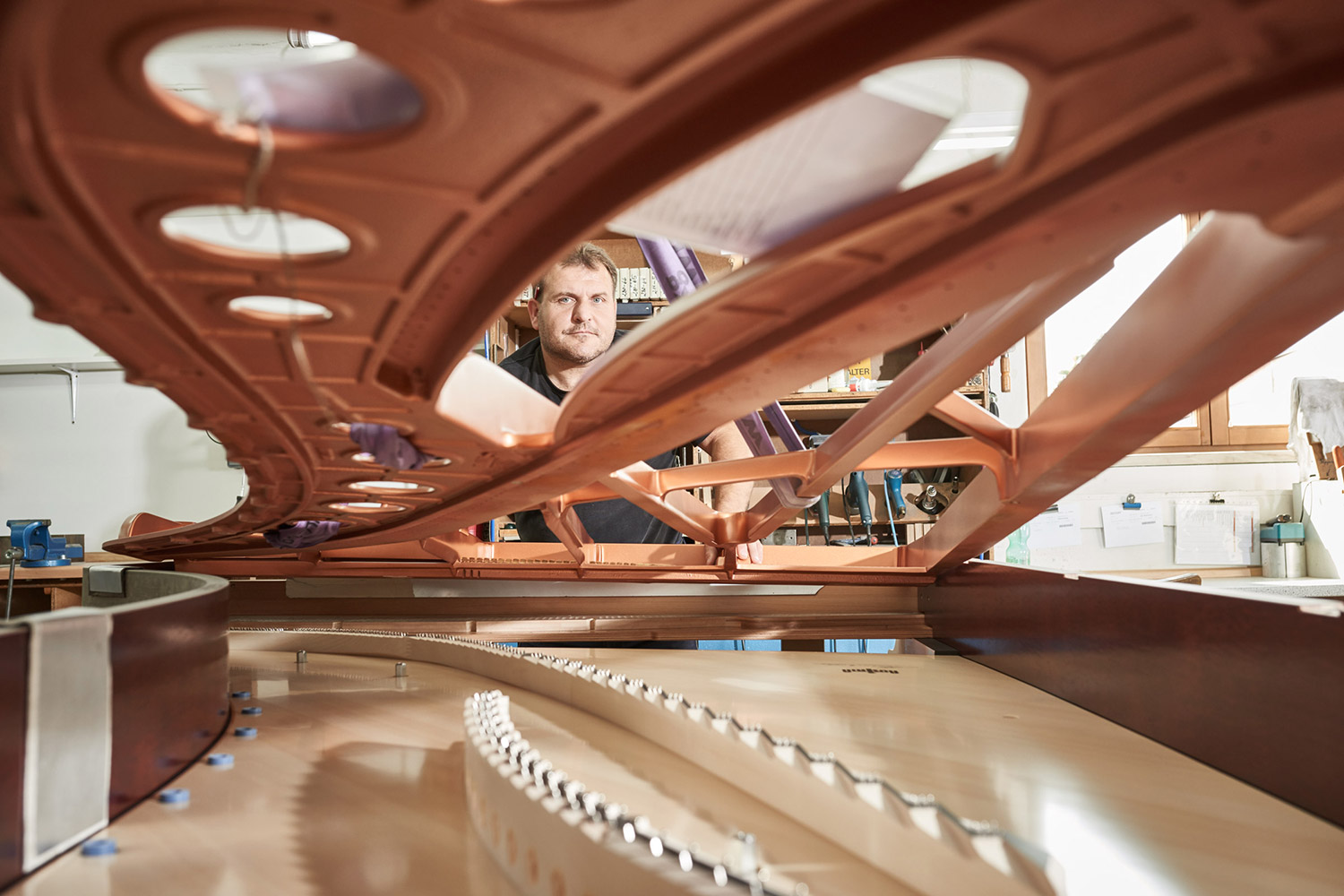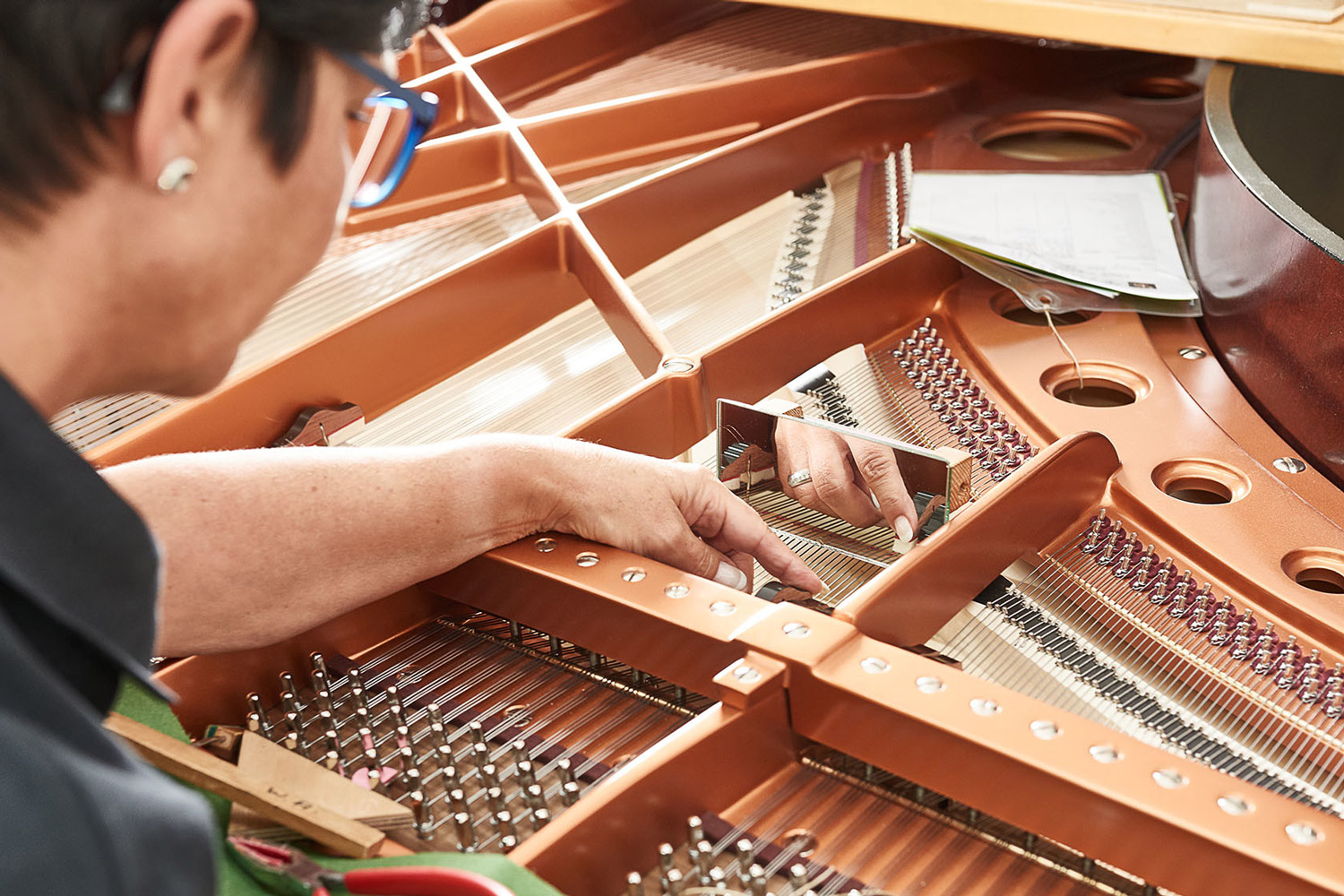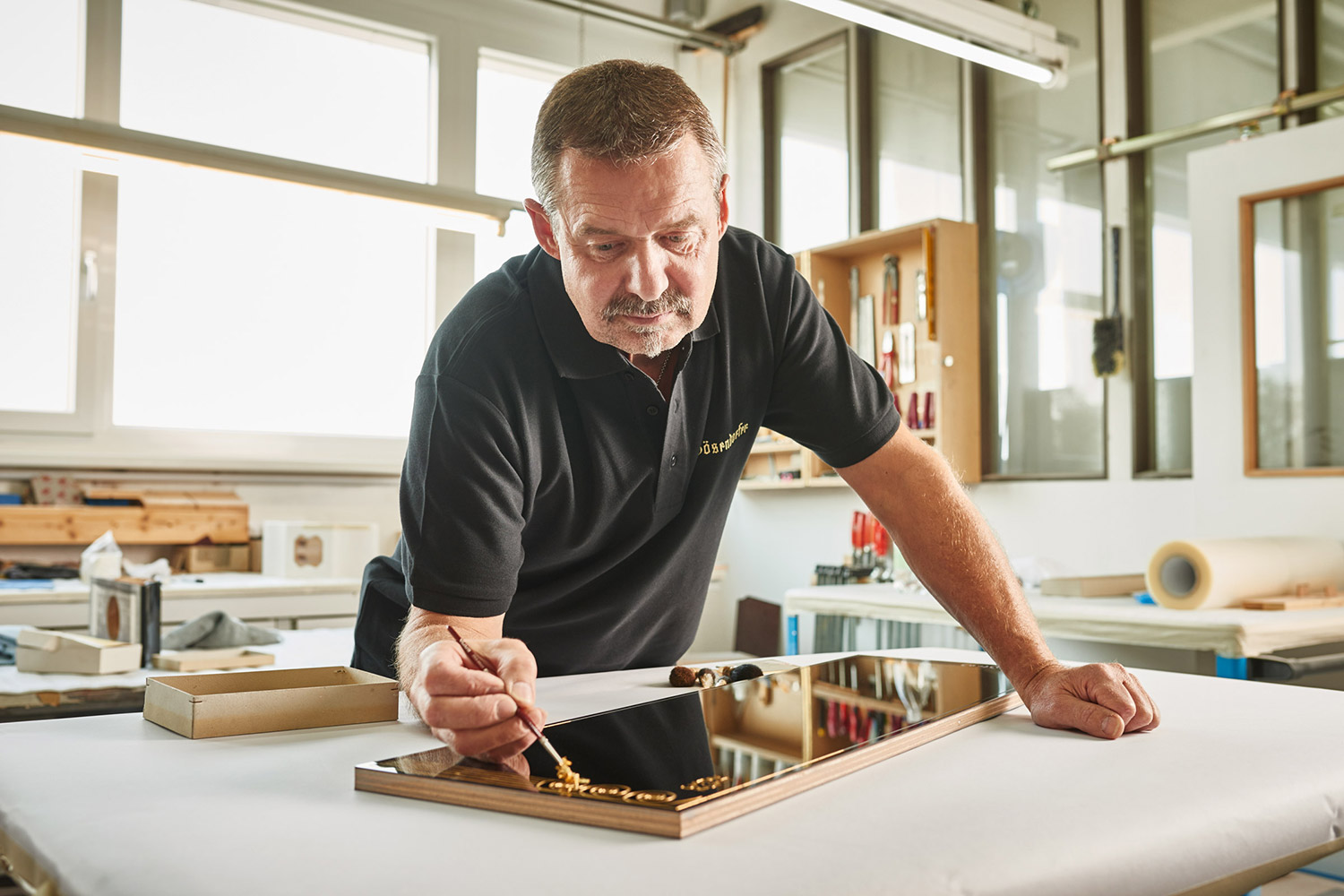Manufacturing
Outstanding Quality
The members of the German Association of Piano Manufacturers look after the traditional craftsmanship of the construction of the piano. Out of this grows the fascination of the classical pianoforte instrument. Naturally, the original instruments of the traditional European manufacturers belong to the elite of the branded instruments. Piece by piece, grand pianos and uprights are built by experienced craftsmen. Numerous workings of the hand are necessary to screw together the thousands of parts so that material and construction are at one.
Without comparison
Good grand pianos and uprights are without comparison. Their natural tone moves the soul. The tone comes to life through resonating strings and vibrating sounding boards. Optimized strings are the source of good tone. Each of these vibrates in its own way. Once the hammer head strikes, the strings move the sound bridge and make the sensitive sound board move. The strings have different vibrations and produce sound waves which are heard by the human ear, the unique sound of the classical piano.
Exquisite Woodwork
For the body, veneer, solid wood, plywood and wooden materials are the raw materials from which the individual components are made. Grand pianos and uprights cannot deny over 300 year history. It is therefore understandable that next a black polished finish, also fine woods have a long tradition in grand pianos and uprights.
Secrets
If secrets do exits in piano manufacturing, then it is surely in the art of constructing the sound body. The iron frame plays an important role in the tension of the strings (over 18,000 kilos), and therefore builds the backbone of the instrument. This, together with the wooden notches, acts as a foundation for the domed and tense sound body. Therefore, the correct wood composition is especially important. Exquisite resonance wood from special nurseries in Europe, selected birch and maple belong to the main wooden components of the sound body. The bridge connects the strings (source of the tone) with the sound board (sole of the instrument).
Playability
The keyboard offers access to the pianoforte instrument. The mechanism of the complicated lever system is controlled using the keys, which in turn brings movement to the hammer heads, which then strike the strings, bringing vibration. The pianist strikes the keys, which in turn accelerates the hammer heads. The strings then start to vibrate. Only when the wood, felt, leather, springs and weights are in perfect balance will the instrument experience the total richness of the natural tone.
Masterful Knowledge
Talk of the town is quality. This, however, does not come with every instrument. This needs more. Masterful knowledge, which remains unchanged in European piano manufacturing. Piano craftsmen therefore have their own education system, usually lasting 31/2 years, attending the German federal specialist college for musical instrument construction in Ludwigsburg.

